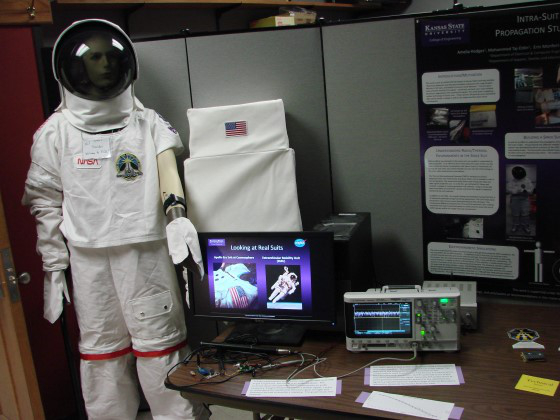In January the department was visited by a film crew from the “Daily Planet” show (from Discovery Channel Canada). Together with the department of Kinesiology and the department of Apparel and Textiles, ECE has been researching ways of instrumenting future astronauts to better predict fatigue on long duration extra-vehicular (EVA) activities, and to transmit that data to a lunar or Mars habitat site in real time. Our goal is to develop sensors and wireless communication methods to make the installation of these sensors inside a space-suit as non-invasive as strapping on a wrist watch. But first, the best biosensors for fatigue prediction have to be determined and built and the unique wireless environment of the spacesuit has to be understood. These videos show some of what has been going on in the departments involved at K-State over the past couple years under a 3-year cooperative grant from NASA.
Segment on K-State work starts at 6 minutes 20 seconds into this excerpt from the program:
http://watch.discoverychannel.ca/#clip1064995
A companion video segment taken in the K-State communications lab can be found here:



